Surrogate 7,92-mm anti-aircraft machine gun mounts of the German armed forces during the Second World War
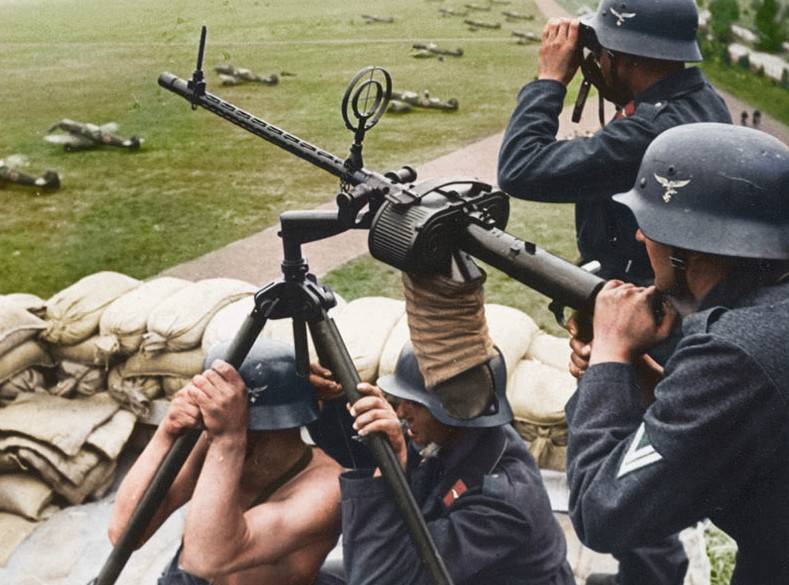
During the Great Patriotic War, small-caliber anti-aircraft artillery and anti-aircraft machine-gun installations were the main means of enemy air defense in the front line. It was from the fire of the MZA and ZPU that the Soviet attack aircraft and short-range bombers suffered the main losses during air strikes on positions and concentrations of enemy troops, transport hubs and columns on the march. At the final stage of the war, after the Luftwaffe lost air superiority, the role of ground defense increased. Pilots of Soviet attack aircraft and dive bombers noted that the destructive fire of German rapid-fire anti-aircraft guns remained very dense until the surrender of the Nazi troops.
The armed forces of Nazi Germany had very effective anti-aircraft guns of small, medium and large caliber. Small German units could use rifle-caliber infantry machine guns mounted on special anti-aircraft mounts and tripods against aircraft operating at low altitudes. In addition, German troops actively used captured machine guns and artillery mounts captured in other countries. It can be stated that among the warring armies, it was the German troops who had the best anti-aircraft cover, and this situation remained until the end of hostilities.
If in the first half of the war German industry successfully compensated for the loss of anti-aircraft machine-gun and artillery mounts lost during the battles, then starting from 1943, the enemy began to actively use surrogate anti-aircraft mounts created on the basis of machine guns and small-caliber machine guns that were not originally intended for this guns. The production volumes of such improvised anti-aircraft weapons were very significant, which partly made it possible to make up for losses.
Anti-aircraft machine gun mounts of a rifle caliber of the German armed forces during the Second World War
Before starting a story about surrogate machine-gun installations, created, as they say, on the knee in the military armory workshops, briefly consider regular German ZPU.
At the initial stage of World War II, the Wehrmacht battalion had twin Zwillingssockel 36 anti-aircraft machine guns mounted on horse-drawn carts or vehicles. A number of 7,92-mm "sparks" were placed on railway platforms and armored vehicles.
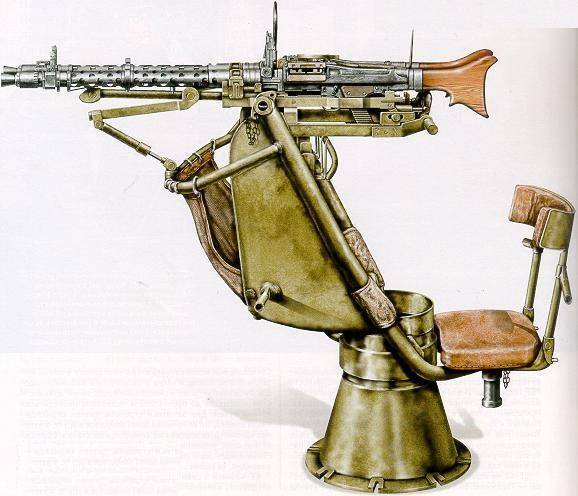
Anti-aircraft machine gun Zwillingssockel 36
This ZPU was officially put into service in 1936 and was produced in a planned manner until 1941.
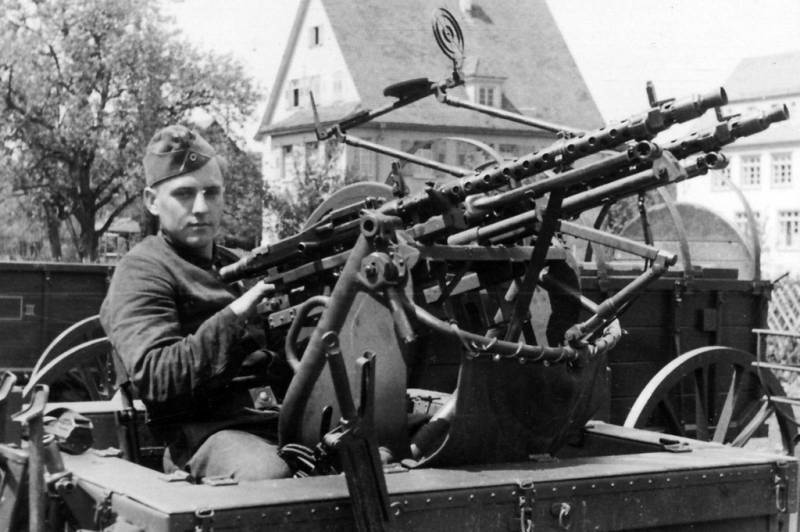
Installation in which two MG machine guns were used. 34, provided a circular shelling of air targets, with elevation angles from -14 to + 73 °. According to reference data, the ZPU could fire at air targets at a distance of more than 1 m. In reality, the effective range of fire at air targets did not exceed 000 m, the ceiling - 600 m. , cartridge boxes with tapes for 500 rounds and control handles.
The machine guns had a single descent, an annular anti-aircraft sight was located on the bracket. The combat rate of fire in short bursts was 240–300 rds / min, and in long bursts - up to 800 rds / min. The total rate of fire was high - up to 2 rds / min. Nutrition MG. 400, used in the ZPU Zwillingssockel 34, was carried out with tapes from a box of 36 or 150 rounds.
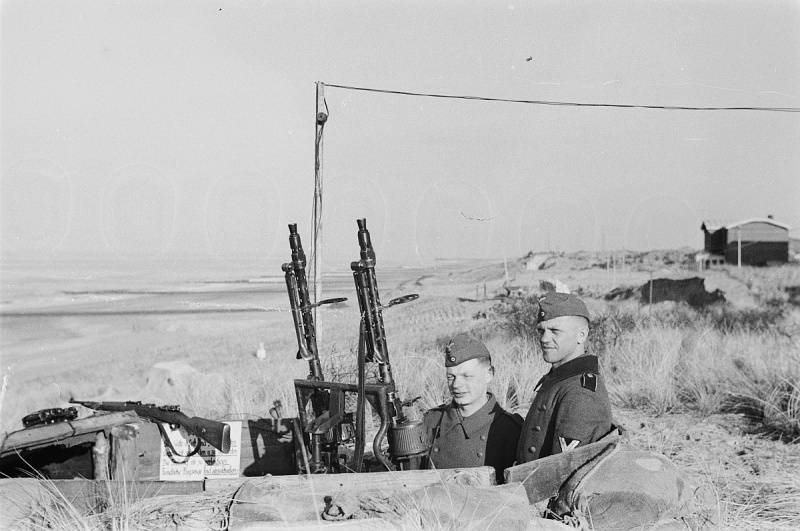
In addition to the twin installation, the troops had MG machine guns. 34, mounted on Dreiben 34 anti-aircraft tripods and equipped with appropriate sights. If necessary, it was possible to mount a conventional light machine gun taken from a line unit on an anti-aircraft tripod.
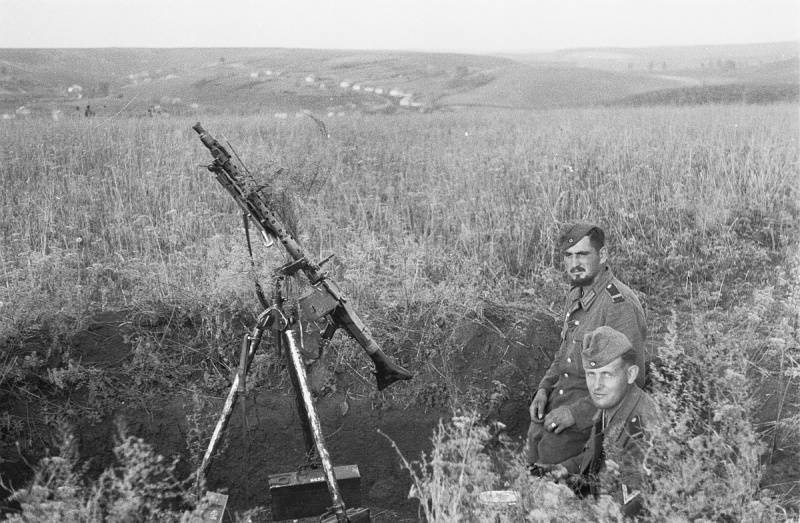
Due to the fact that it was easier to use such installations at the forefront than paired ones, they were popular among the troops. Although the ZPU with one machine gun did not have such a density of fire as the Zwillingssockel 36, it had a high flexibility of use, simple design, relatively low weight and high maneuverability. However, the regular machine gun MG. 34 also allowed for the possibility of anti-aircraft fire using a special Lafettenaufsatzstück anti-aircraft rack, although with less convenience.
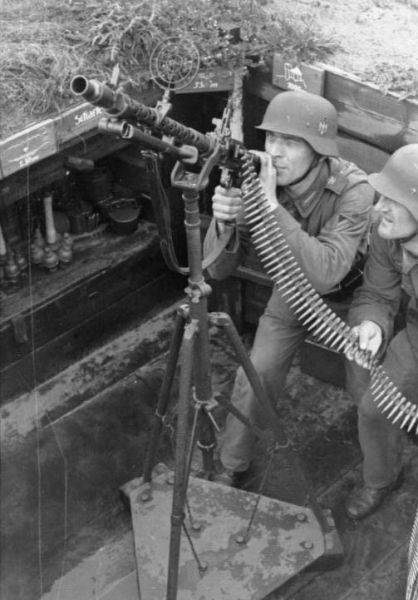
With the use of machine guns MG. 34, a small number of quadruple ZPUs were created semi-handicraft. The total rate of fire in such an installation was 4 rds / min - twice as much as that of the Soviet quad 800-mm anti-aircraft machine gun installation M7,62 mod. 4, which used four Maxim machine guns mod. 1931/1910 Since the machine guns MG. 30 were air-cooled, the mass of the German installation was significantly lower.
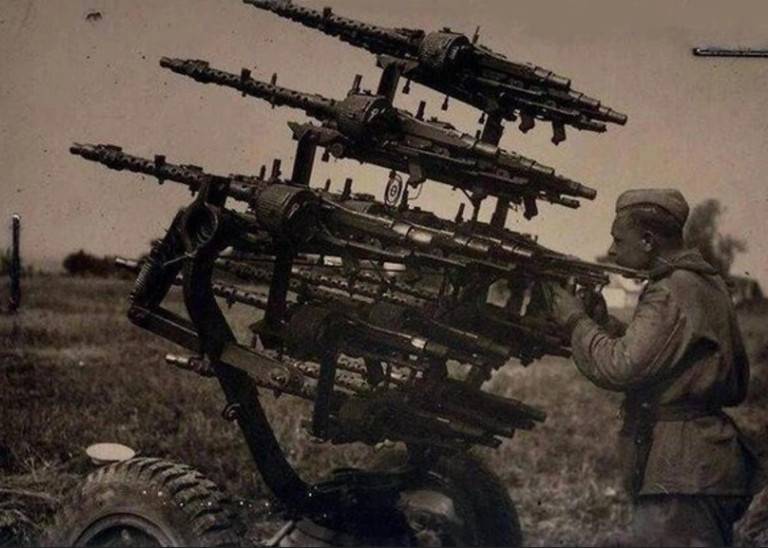
As a trophy, our troops captured the ZPU, which used 18 MG machine guns. 34. In a second, such an installation fired approximately 360 bullets. But this ZPU was too bulky and inconvenient to maintain. In addition, in the conditions of constant machine-gun hunger experienced by the Wehrmacht, such use of machine guns was irrational.
The troops of the second line, which carried out the protection and defense of rear facilities, had modernized machine guns MG. 08, mounted on sliding tripods that allow firing at high elevation angles, and equipped with anti-aircraft sights and shoulder rests, the rate of fire reached 650 rds / min.
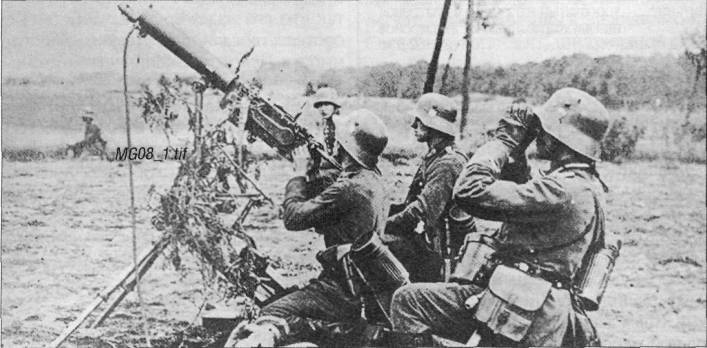
This weapon was a German version of the Hiram Maxim machine gun and entered service before the First World War. By the mid-1930s, the MG. 08 was considered obsolete. Its mass was more than 60 kg, which hindered the maneuverability of infantry units. However, this durable, albeit somewhat overweight weapon was highly reliable and could deliver intense fire without the risk of overheating the barrel. When the crew did not need to carry weapons over a long distance, the outdated water-cooled machine gun performed very well.
By the time the German attack on the Soviet Union, the first line troops had a certain number of MG machine guns. 13. The scheme of operation of the automation of this machine gun largely repeated the MG. 08, but at the same time there was a refusal from the water cooling of the barrel and from the tape feed. Barrel on MG. 13 became removable. The machine gun used 75-round drums or a 25-round box magazine. The weight of the unloaded weapon was 13,3 kg, the rate of fire was up to 600 rds / min. To reduce the size of the tubular stock with a folding shoulder rest folded to the right. Some of the machine guns were mounted on tripod anti-aircraft mounts and equipped with an annular sight.
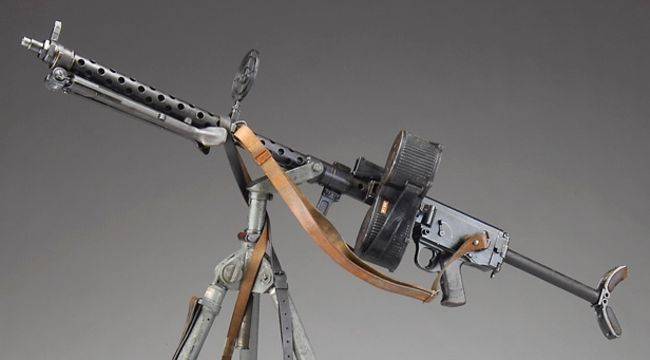
MG. 13 on anti-aircraft machine
Although MG. 13 was significantly lighter than the standard Reichswehr MG light machine gun. 08/15, he did not suit the military. Machine gun MG. 13 had many drawbacks: the complexity of the design, the lengthy change of the barrel and the high cost of production. The store-bought power supply system caused complaints, which increased the weight of the carried ammunition load and reduced the combat rate of fire, which made the machine gun ineffective when firing intensively from the machine gun. In this regard, MG. 13 was produced relatively little, its production continued until the end of 1934, until the much more successful MG went into production. 34.
In addition to German machine guns to combat aviation at low altitude, the German armed forces used the Czechoslovakian ZB-26 and ZB-30 light machine guns, as well as the ZB-53 machine guns chambered in 7,92 × 57 mm, adopted by the German army.
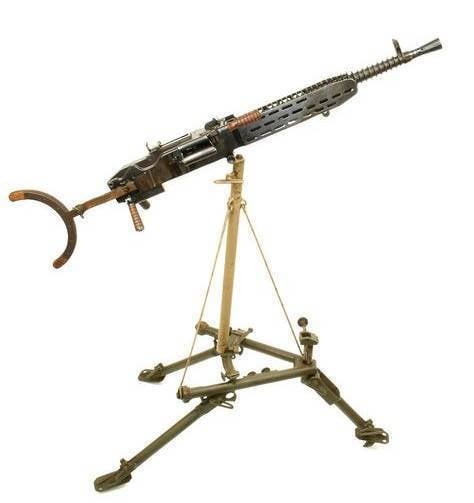
Machine gun ZB-53 in position for anti-aircraft shooting
Due to the high quality of workmanship, reliability and good performance, the machine guns produced at the Zbrojovka Brno enterprise were actively used by security and police units, as well as in the Waffen-SS formations. In total, the German army received 31 light and 204 machine guns of Czech production.
In addition to Czech machine guns, the enemy made limited use of captured Polish machine guns Ckm wz. 30, which was a modification of the American Browning M1917 chambered for the German cartridge 7,92 × 57 mm. Regular tripod machine gun Ckm wz. 30 allowed anti-aircraft fire.
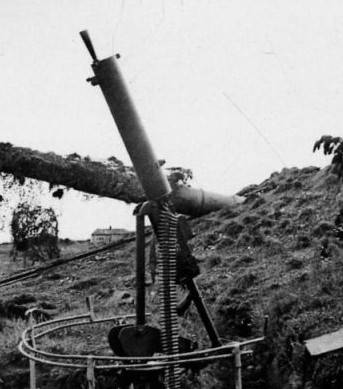
Machine gun Ckm wz. 30 in anti-aircraft position
By the time the mass production of the MG. 42, the German command came to understand that with an increase in flight speed and an increase in the security of combat aircraft, the role of rifle-caliber anti-aircraft installations decreased.
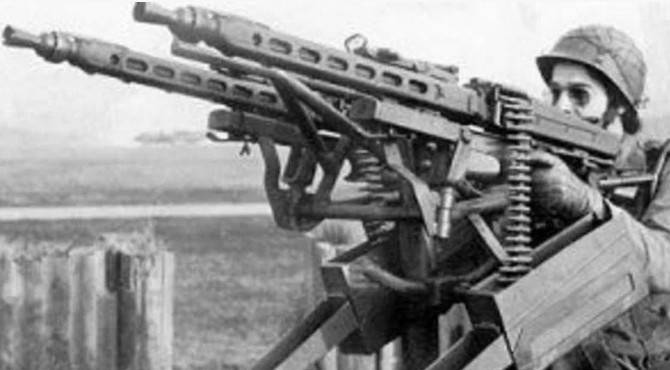
An American soldier with a captured twin anti-aircraft gun MG. 42
However, M.G. 42 was often mounted in universal turrets on armored vehicles, and a small number of twin anti-aircraft guns were produced.
Surrogate anti-aircraft machine gun installations
In the summer of 1941, improvised anti-aircraft machine gun mounts appeared on the Luftwaffe field airfields, located within the reach of Soviet close bombers and attack aircraft, in which 7,92-mm machine guns were used, dismantled from German combat aircraft that could not be restored.
This practice became widespread in 1943, when new German fighters, attack aircraft and bombers began to arm only 13,2–15 mm machine guns and 20–30 mm cannons, after which a large number of rifle-caliber aircraft machine guns accumulated in warehouses.
With minimal modifications, the turret machine gun MG could be used for anti-aircraft fire. 15 caliber 7,92 mm. In fact, for this it only needed to be installed on a sufficiently long vertical rack with a hinge and ensure stability. The necessary sights on the machine gun were available.

Calculation with anti-aircraft machine gun MG. 15 at the field airfield
Sometimes the protection of German field airfields did not bother with the creation of specialized anti-aircraft tripods, the manufacture of which required time and materials.
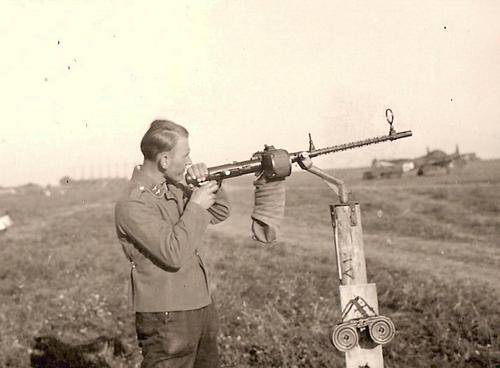
In this case, the turret rack, dismantled from the aircraft, together with a machine gun, was hammered into the end of a log vertically dug into the ground.
Machine gun MG. 15 is based on the MG light machine gun. 30, which, in turn, traced its lineage from the S2-100, created in 1929 by the Swiss company Waffenfabrik Solothurn AG. Official adoption of MG. 15 entered service in 1936. In total, more than 17 machine guns were produced.
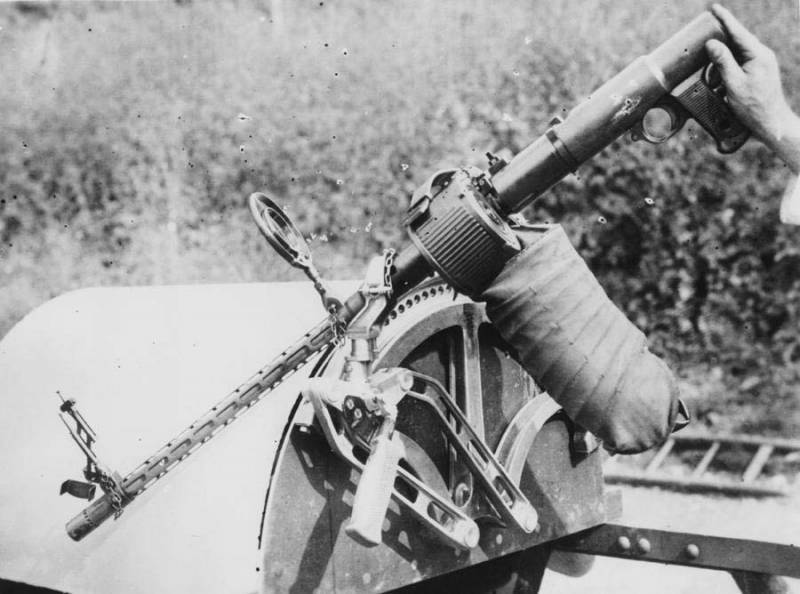
7,92 mm aircraft turret machine gun MG. fifteen
Machine gun MG. 15 was light enough, without cartridges, it weighed 8,1 kg, length - 1 mm. Rate of fire: 090–900 rds/min But taking into account the fact that the 1-round double drum magazine so beloved by the Germans was used to feed the machine gun with cartridges, the practical rate of fire left much to be desired.
To compensate for the "machine gun hunger" several thousand MG machine guns. 15, stored in warehouses and dismantled from aircraft, began to be massively modified for the needs of the Luftwaffe airfield divisions. Taken from MG aircraft. 15 were mounted on tripod mounts of Norwegian m/29 Browning machine guns and converted into light machine guns. A significant amount of MG. 15 received lightweight factory-made aluminum alloy anti-aircraft tripods.
After MG. 15 turn came to machine guns MG. 17 with belt feed, designed for firing through the area swept by the propeller, with a synchronizer in fixed firing installations.
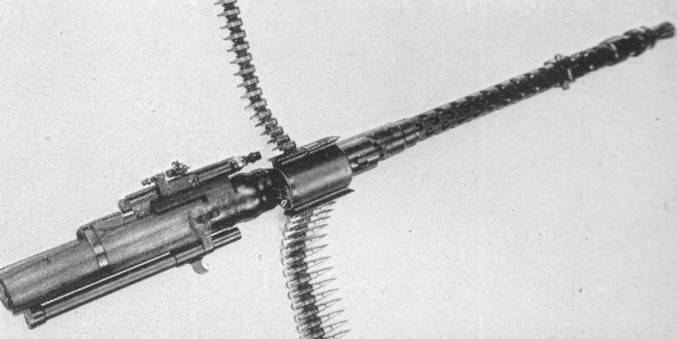
7,92 mm aircraft machine gun MG. 17
Machine gun MG. 17 structurally had a lot in common with the MG. 15. Its drum-type feeder used a one-piece metal belt with a semi-closed link to feed cartridges, and a practical rate of fire compared to the MG. 15 was slightly higher. The rate of fire without the use of a synchronizer is up to 1 rds / min.
The mass of the machine gun without ammunition was 10,2 kg, length - 1 mm.
By 1943, several thousand MG machine guns had accumulated in warehouses. 17, and they tried to install them on machines from MG. 34. However, this experience was not very successful, the loading system, trigger mechanism and sights required a lot of refinement. As a result, most of the MG. 17 were used in twin and quad anti-aircraft installations.
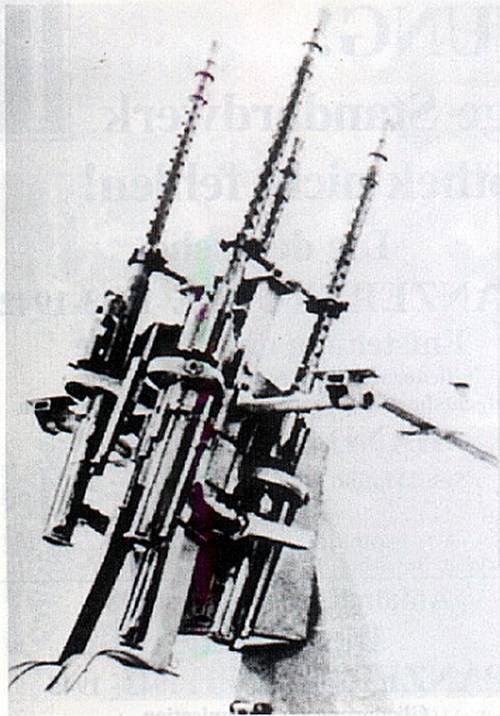
Quadruple anti-aircraft installation of machine guns MG. 17
Machine guns were mounted on frames welded from metal pipes. The electric trigger was replaced by a mechanical one, and the reloading system was also reworked.
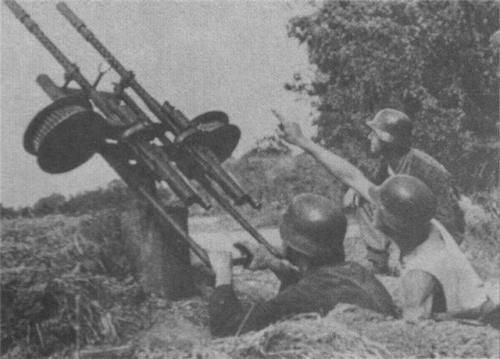
Twin anti-aircraft installation MG. 17 in position
Taking into account the rather high rate of fire and the presence of a belt feed, these ZPUs performed well.
The 7,92 mm MG aircraft machine gun was also used in noticeable volumes in anti-aircraft installations. 81. This is a weapon that largely repeats the design of the MG. 34 was created and manufactured by Mauser Werke AG.

7,92 mm aircraft machine gun MG. 81
Machine gun MG. 81 was supposed to replace the MG. 15 and MG. 17. Serial production was launched in 1939. Since by that time there were an abundance of early samples, in stationary offensive machine gun mounts MG. 81 was used to a limited extent.
This weapon was mainly used in defensive mobile turrets, mechanized and manual installations. When creating MG. 81 Germans managed to come close to the rate of fire of the Soviet ShKAS aviation machine gun. Rate of fire MG. 81 reached 1 rds / min. The machine gun weighing 600 kg had a length of 6,5 mm.
German machine gun MG. 81 compared to the Soviet ShKAS was lighter and more technologically advanced. But already at the beginning of World War II, rifle-caliber aircraft machine guns often had insufficient power to destroy all-metal aircraft; from the beginning of 1939 to the end of 1944, more than 46 MG machine guns were produced. 000 of all modifications.
To increase the mass of a second salvo when used in a turret, a twin modification of the MG was developed. 81Z (German zwilling - twin) with a rate of fire up to 3 rds / min. To control fire, a pistol grip with a trigger was located on the left machine gun.
Anti-aircraft installations with machine guns MG. 81 and MG. 81Z were used in ZPU, covering German airfields from low-altitude Soviet air strikes. The composition of the calculations usually included ground technical personnel, including gunsmiths, capable of competently servicing machine guns and making repairs.
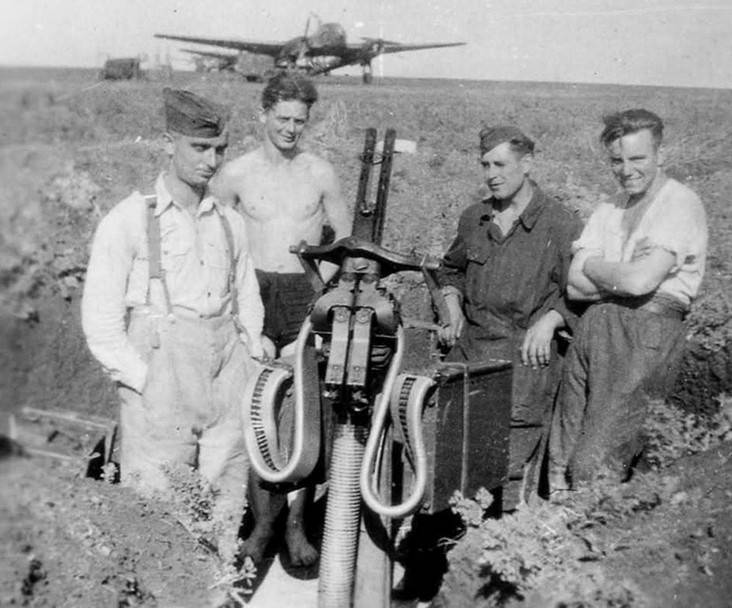
However, as the situation on the fronts worsened, the Luftwaffe was forced to share its reserves. Part MG. 81 was converted into manual, and anti-aircraft “sparks” were very often installed on self-propelled chassis.
To provide air defense airfields using MG. 81, an eight-barreled anti-aircraft gun was created, the rate of fire of which reached 12 rds / min.
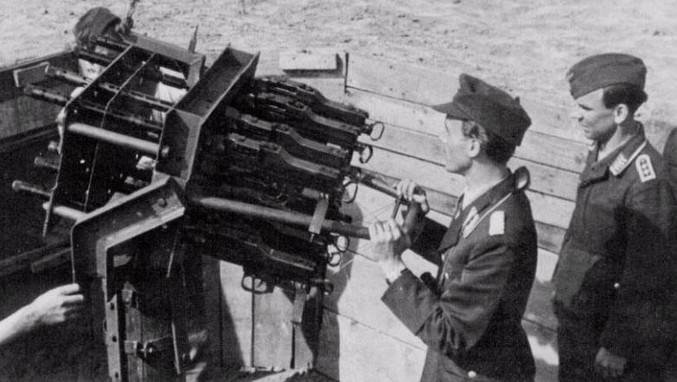
Due to the bulkiness and considerable mass, the eight-barrel installations were placed in stationary positions.
Very successful aviation machine guns MG. 81 and MG. 81Z, according to a complex of combat and service-operational characteristics, were best suited for use as part of light rifle-caliber anti-aircraft machine gun mounts. In the post-war period, part of the MG. 81 and MG. 81Z was converted to the 7,62x51 mm NATO standard cartridge and was used by the armed forces of Western countries on transport and combat helicopters and patrol boats.
Ammunition for 7,92 mm German anti-aircraft machine guns
In order to make it clearer what kind of threat the German machine gun mounts posed for our aircraft, let's take a closer look at 7,92 mm ammunition.
During the Second World War, a 7,92 × 57 mm cartridge with a muzzle energy of 3–700 J was used to fire from German rifles and machine guns. Most often it was ammunition equipped with an Ss bullet (German: Schweres spitzgeschoß - pointed heavy) weighing 4 g. Such a bullet accelerated in a 100 mm barrel up to 12,8 m / s.
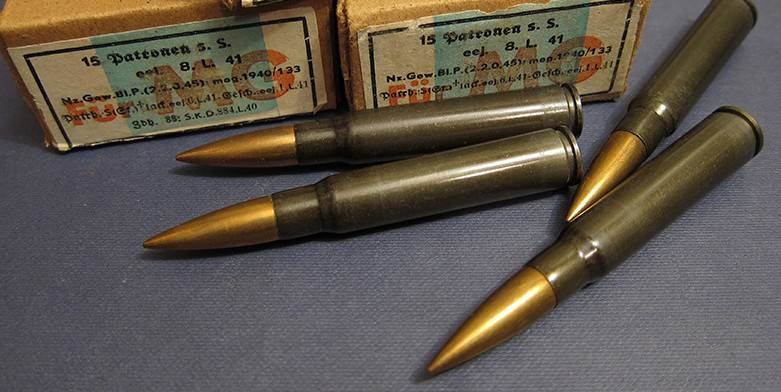
Cartridges 7,92 × 57 mm Mauser with Ss bullet
For firing from anti-aircraft 7,92-mm machine guns, the Germans very widely used cartridges with armor-piercing bullets SmK (German: Spitzgeschoß mit Kern - pointed with a core). At a distance of 100 m, this 11,5 g bullet with an initial velocity of 785 m/s could normally penetrate 12 mm armor. The ammunition of anti-aircraft machine guns could also include cartridges with armor-piercing incendiary bullets PmK - (German: Phosphor mit Kern - phosphorus with a core). There were also cartridges with armor-piercing incendiary bullets PmK
To correct anti-aircraft fire, every 3-5 ordinary or armor-piercing cartridges were loaded into the machine-gun belt with an armor-piercing tracer bullet SmK L'spur - (German: Spitzgeschoß mit Kern Leuchtspur - pointed tracer with a core).
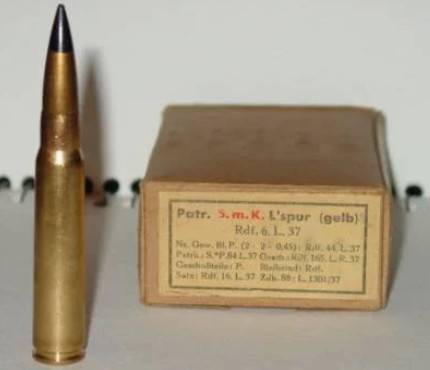
7,92 mm armor-piercing tracer cartridge SmK L'spur
Its tracer burned at a range of up to 1 m, which exceeded the range of effective fire on air targets for weapons of 000 mm caliber. In addition to adjustment and target designation, an armor-piercing tracer cartridge, when breaking through the wall of a gas tank, could ignite fuel vapors.
For firing from aircraft machine guns of normal rifle caliber, the Germans used special cartridges with a bullet marked with a green stripe, intended only for this weapon. They used an enhanced combat charge, which significantly increased the muzzle velocity of the bullet. Such cartridges had the letter V in the designation (German: Verbessert - improved).
Aviation ammunition included 7,92-mm machine-gun cartridges with several types of armor-piercing tracer, armor-piercing incendiary tracer and sighting (explosive) bullets: 7.9 mm Patrone SmK-V; 7.9 mm Patrone SmK L'spur 100/600-V; 7.9 mm Patrone SmK G'Spur-V; 7.9 mm Patrone PmK-V and 7.9 mm B-Patrone-V.
The effectiveness of 7,92-mm anti-aircraft installations on air targets
7,92-mm bullets of special types at distances up to 600 m posed a great danger to units and assemblies not covered by armor. When they hit the fuel tank, they were able to ignite gasoline vapors, and breaking through the cabin wall, they could kill or seriously injure the pilot.
In the initial period of the war, the Soviet command was forced to attract fighter aircraft for assault operations against the advancing German troops. For bombing and assault attacks on the enemy, we widely used outdated I-15bis, I-153 and I-16 fighters, on which, from special protection, at best, there was only an armored back, and the tanks were not protected. At the same time, old-type fighters with air-cooled engines had good protection when fired from the front hemisphere, the more modern MiG-3, Yak-1 and LaGG-3 with liquid-cooled engines were quite vulnerable even to a single chamber of the water radiator.
Rifle-caliber bullets posed a danger not only to fighters used as attack aircraft, but also to front-line bombers: Su-2, Yak-2, Yak-4, SB-2, Ar-2, Pe-2 - which, acting on small altitude, often made several visits to the target.
In 1941, when the enemy broke through the front, the command of the Red Army sent long-range bombers DB-3, Il-4 and Er-2 during daylight hours to suicidal attacks. In order to accurately cover the enemy’s manpower, vehicles and military equipment with bombs, the bombers had to descend to a height of several hundred meters, falling into the zone of effective fire of anti-aircraft machine guns.
The Il-2 attack aircraft was the least vulnerable to shelling with rifle-caliber bullets. On this aircraft, the engine, cockpit and fuel tanks were covered with a streamlined armored hull and armored partitions with a thickness of 4 to 12 mm. The steel armor included in the power pack was complemented by multi-layer bulletproof glass. The windshield withstood shelling with armor-piercing 7,92-mm bullets fired at close range. The armor protection of the cockpit and engine, due to the significant angles of contact with the armor, in most cases did not break through armor-piercing rifle-caliber bullets.
Often, attack aircraft returned from a sortie, which had dozens, and sometimes hundreds of holes from bullets and fragments of anti-aircraft shells. Archival sources say that 52% of the hits were on the wing and the unarmored part behind the cockpit, 20% of the damage related to the fuselage as a whole. The engine and hoods received 4% damage, and the radiators, cab and rear gas tank received 3% damage each.
However, these statistics cannot be unconditionally trusted. There is reason to believe that there were many more IL-2s shot down due to hitting critical parts: the engine, cockpit, gas tanks and radiators. In most cases, the experts who conducted the inspection of aircraft that received combat damage did not have the opportunity to examine the attack aircraft hit by anti-aircraft fire in the target area.
It is known that during the Great Patriotic War, about half of the patients in Soviet hospitals had injuries to their limbs. But this does not mean that the bullets do not hit the head and chest. This is evidence that those who received bullet wounds to the head and chest in most cases die on the spot. Therefore, drawing conclusions only on the basis of damage to returned aircraft is a mistake. The planes and fuselage, riddled with bullets and fragments, do not need additional protection measures. Their strength was enough to continue the flight even with extensive damage to the skin and power pack.
Of course, the IL-2 was very well protected from 7,92 mm bullets. As a rule, they did not penetrate armor, and their destructive effect on the power elements of the attack aircraft design with single hits turned out to be insignificant. But at the same time, it would be wrong to say that rifle-caliber ZPUs were absolutely powerless against armored attack aircraft. A dense burst of a rapid-fire machine gun could well have caused damage that impeded the completion of a combat mission.
In addition, on double vehicles, the shooter's cabin was not covered at all by armor from below and from the side. Many authors who write about the combat use of the Il-2 lose sight of the fact that in the depths of enemy defenses, Soviet attack aircraft had to fly at low altitudes, bypassing areas with a high concentration of anti-aircraft artillery, avoiding encounters with enemy fighters. At the same time, a long flight with closed oil cooler armored shutters was impossible.
According to the memoirs of test pilot and cosmonaut Georgy Timofeevich Beregovoy, who flew an Il-2 during the war years, he made an emergency landing in the forest after he received a machine-gun burst into the oil cooler while moving away from the target. In addition, pilots, especially young ones, often forgot to close the oil cooler dampers over the target.
Even taking into account the fact that the enemy had a large number of rapid-firing artillery anti-aircraft guns, the active use of rifle-caliber ZPU continued until the surrender of the German troops. Of course, at the final stage of the war, the role of 7,92-mm anti-aircraft machine guns in providing military air defense was no longer the same as in 1941, but anti-aircraft machine gun installations occupied their niche until the end of the war, due to their low weight, versatility and ease of use.
To be continued ...
- Linnik Sergey
- Soviet aircraft machine guns and cannons used in air defense in the initial period of the Great Patriotic War
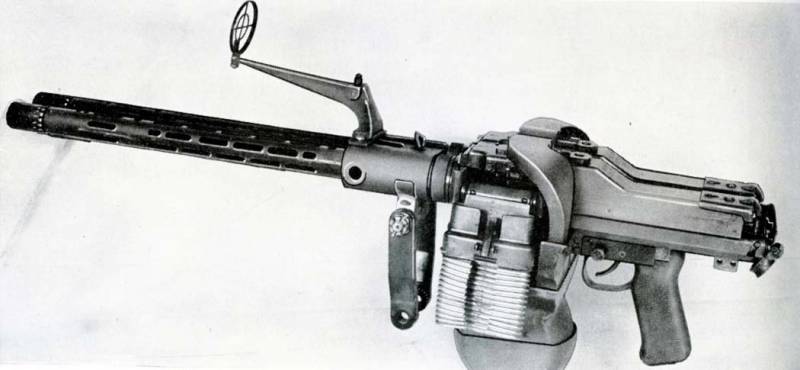
Information